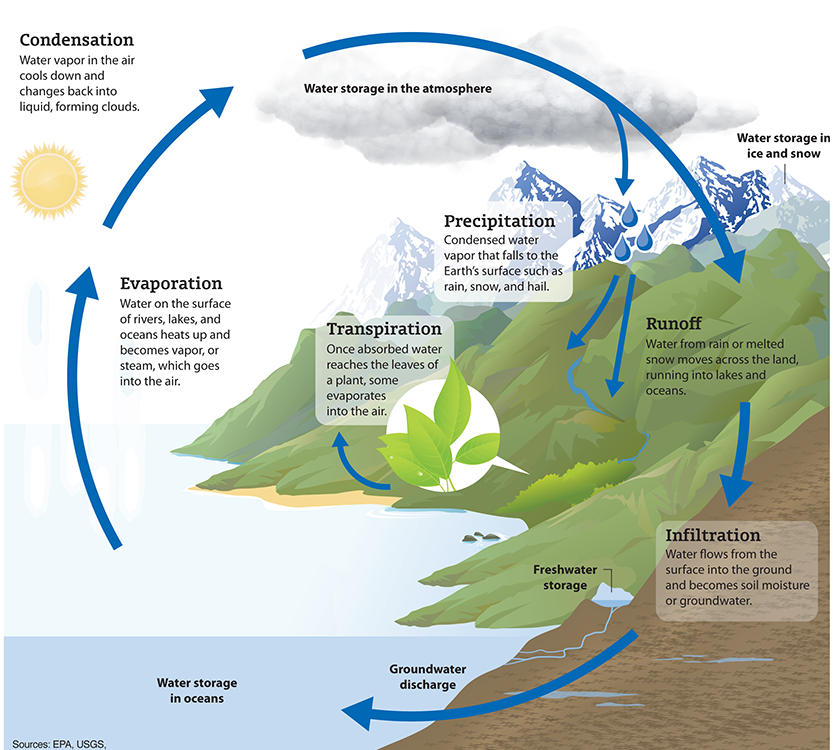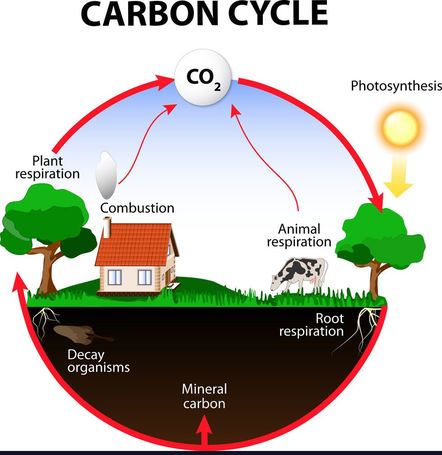The Cycling of Matter
Over time, matter—such as water, carbon, oxygen and nitrogen—is transferred between organisms and the physical environment.
The Water Cycle
|
Processes in the Water Cycle
|
Diagram of The Water CycleVideo: Earth's Water Cycle (NASA) |
The Carbon Cycle
|
Processes in the Carbon Cycle
|
Demonstrating Ocean Acidification
Video: The Carbon Cycle |
This activity shows how water becomes more acidic when carbon dioxide is bubbled through it.
This demonstrates the link between carbon dioxide in the atmosphere and a process called ocean acidification, a change in the pH, or acidity, of the ocean. This change in ocean chemistry has an impact on many living things in the oceans including coral polyps, clams, prawns, and other sea life. Ocean acidification is the process by which carbon dioxide (CO2) in the atmosphere dissolves in the upper waters of the ocean (H2O) and through a chemical reaction becomes carbonic acid (H2CO3). This increased acidity decreases the amount of carbonate ions available in the ocean. Many living things rely on carbonate to build body structures. Coral polyps use carbonate to create little 'cups' that they live in and use as protection from predators. Crustaceans, such as prawns or lobsters, and molluscs, such as clams and scallops, also rely on carbonate to build their exoskeletons, or 'shells'. Lower levels of carbonate in the ocean means that coral polyps and other living things need to expend more energy taking what is left to create coral reefs and shells. As more energy is spent on building structures, less energy is available for other processes such as reproduction and growth and can even led to starvation. Ocean acidification happens in all areas of the oceans and may have ripple effects on ocean health. Video: The Carbon Cycle and Global Warming |





